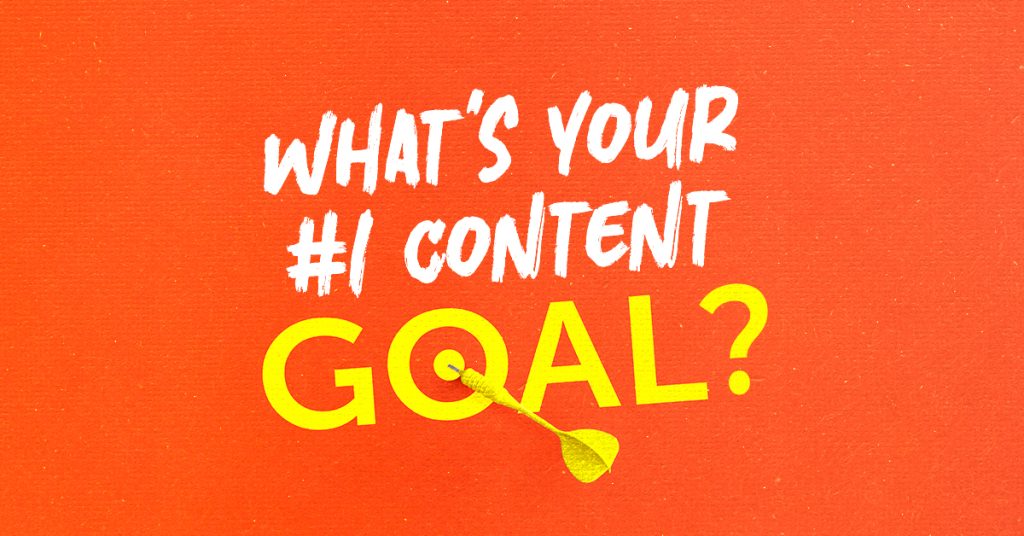In today’s digital landscape, it’s more important than ever to understand how to create a content strategy that delivers tangible results.
In an environment saturated with content, your strategy should be geared toward attracting the right audiences and engaging them to increase conversions. But many organisations miss the mark, investing in content marketing without a defined content marketing strategy to guide their marketing efforts.
A recent study indicated that 63% of B2B companies haven’t yet created a documented content strategy.That means two-thirds of businesses are investing money without a solid roadmap.
A good content management strategy clarifies your goals, helps you to reach your target audience, and ensures a consistent brand identity. Ultimately, your strategy provides direction and purpose to your content creation, so your investment in content marketing provides a return.
Get your FREE Marketing Check Up now!
Table of Contents
- Elements of a Solid Content Strategy
- Understanding Your Goals
- Defining Your Target Audience
- Carrying out a Content Audit
- Deciding on Your Content Types
- Building a Content Plan and Calendar
- Choosing Content Topics
- Choosing Where To Publish Your Content
- Promoting Your Content
- Conclusion
- FAQs about how to create a content strategy
- What are the steps in creating a content strategy?
Elements of a Solid Content Strategy
To start with, how do you define a ‘content strategy’?
Kristina Halvorson, a leading figure in the world of content strategy, defines it as “the planning, creation, delivery, and governance of content.” This definition originated way back in 2009 from the first edition of her book, Content Strategy for the Web.
That’s a broad definition that includes every aspect of your content, from blog posts to social media content. That’s because a content strategy is a holistic approach. But, let’s face it, it can feel overwhelming. For the sake of clarity, we can simplify the process by looking at content strategy as the overarching framework for creating and distributing any form of content marketing.
Understanding Your Goals

To start creating a content strategy, ask yourself why you want to publish content at all. What do you want to achieve and what does successful content look like? Do you want to build a community, develop a marketing funnel, raise brand awareness, educate your audience, or promote a new product or service?
Your goals determine your content focus. For example, let’s say your goal is to establish yourself as a thought leader in a specific industry. You might choose to develop a content strategy centred on informative articles and white papers.
Or, let’s say you’re promoting a course. A good content strategy might be a mix of how-to videos, email marketing and blog posts showcasing the course content and the value it brings to your audience. In every instance, your goal dictates the journey.
Defining Your Target Audience
Once you’ve clarified your goals, you’ll need to determine your audience. Without this knowledge, it’s like taking a shot in the dark.
When figuring out how to create a content strategy, be very clear about who you’re targeting, then understand their interests and needs. After all, great content is compelling because it’s relevant.
So, develop buyer personas, outlining the needs and concerns of those in your target audience. Explore the kind of content they’re already engaging with.
See where they hang out online – for example, are they mainly on LinkedIn, Instagram, Facebook, Pinterest or Twitter, or on online forums? Are they on Q&A websites like Quora, or niche communities like Reddit? Armed with this knowledge, you’re prepared for success.
Carrying Out a Content Audit
Now it’s time to look in the mirror. Do you already have a website with blogs and online resources or social media pages? Have you been consistently creating and uploading videos?
Before creating a content strategy, it’s a good idea to analyse any existing content you already have. Ask yourself which of your content has resonated with your audience – and, more importantly, why?
Which content pieces failed to attract your audience and which failed to deliver the results you hoped for? Look for recurring themes and spot opportunities for improvement.
An honest appraisal helps you define and address weaknesses. Fortunately, there are tools that can help you carry out this task effectively. You can use online tools such as Feedly and BuzzSumo or opt for sophisticated programs, such as HubSpot’s Website Grader.
Deciding on Your Content Types
In a competitive world, understanding how to create a content strategy goes beyond text and visuals. To cut through the clutter, use a range of different content formats and identify the right fit for your target audience and overall business goals.
For example, a young demographic with a low attention span might be more likely to engage with short TikTok videos and high-quality Instagram photos and stories.
That means opting for short video-based content and incorporating eye-catching images into each video and image you create. But, if you’re reaching out to academics and researchers, more complex articles, online reports, infographics, webinars, podcasts or case studies are often preferred.
| Goal | Target Audience | Recommended Content Formats |
| Brand Awareness | Gen Z and millennials |
|
| Customer Education | Professionals in their late twenties and up |
|
| Thought Leadership | Business decision-makers, scholars and industry experts |
|
Building a Content Plan and Calendar

There are lots of exciting possibilities for creative professionals when choosing how to create a content strategy, but without proper organisation, your ideas and inspiration could be easily lost.
One way to address this is to develop a content calendar mapping out upcoming content you want to produce. With a comprehensive content calendar, your creativity can be captured and organised to fit around important dates or events, allowing you to respond to changing circumstances. You can also make good use of visual cues to highlight significant deadlines and organise your plan visually.
Using colour-coded labels will help signal priorities. This visual format will also help you and your marketing team keep up with publication deadlines, monitor progress, and track completion levels, so you can make changes as needed. And don’t forget the big picture.
Before writing your plan, consider topical trends and events such as:
- Valentines Day
- Christmas
- New Year
- Father’s and Mother’s Day,
so you can tailor your content around key occasions that resonate with a wide audience.
You should also plan ahead. That might mean using trend prediction data or monitoring consumer behaviour to find out what’s trending online using tools like Feedly and BuzzSumo.
Choosing Content Topics
In order to gain an advantage in the content arena, it’s important to stay organised, and one of the easiest ways to achieve this is to define content pillars.
These pillars act as broad categories organising the topics you’ll address. Each category can have related sub-topics and all the posts you create will then slot easily into their rightful category.
With your pillars defined, you can use brainstorming and mind mapping techniques to flesh out topics that could work.
It’s also important to remember keywords. To capture organic traffic, use keywords strategically when deciding on content topics.
Find out what users are actually searching for with Google Trends. It’s also a good idea to use tools like Semrush, Ahrefs and Answer the Public to get a detailed analysis of high-value keywords within your niche, track trends, and generate fresh content ideas.
Choosing Where To Publish Your Content
Of course, it’s possible to post all your content on your own blog or website. You may even decide to focus on building a community via social media sites. It makes sense to be present on several social media platforms. But deciding on the best combination of social platforms can be tricky and time consuming managing them.
So, start by determining where your audience tends to spend most of their time. But also consider factors such as whether it’s possible to directly advertise and sell from each platform.
Ultimately, your choice needs to reflect the purpose content behind your strategy and should be reviewed regularly in line with consumer trends.
Promoting Your Content
It takes hard work and a substantial amount of research to understand how to create a content strategy, and all that effort could go to waste without appropriate promotion. Your starting point will depend on the choices you’ve already made about content type, content purpose, and preferred platforms.
You should be sharing new blogs across your social media channels. Or, it may be cost-effective to promote each new post with paid ads using keywords targeting users in your demographic.
And, if your content has global appeal, it might make sense to pay for translation to expand your reach into new regions.
There’s a multitude of approaches to research your options, analyse current trends, and find out how others in your sector are attracting attention to new content releases.
Conclusion
Understanding how to create a content strategy can initially seem challenging. But with thorough planning you will have more clarity and focus. This is the first step to attract and engage with the right audience and turn leads into sales.
For more information follow me on LinkedIn where I regularly post content tips.
FAQs
How do I start to create a content strategy?
- Identify your content goals.
- Decide on the kind of target audience you will reach with the content, considering things like:
- demographics
- income
- employment status
- lifestyle choice etc.
- Do a content audit and assess content that has already been created by you or your competitors to see what is working well.
- Decide on the type of content and select the kind of format that resonates with your target audience.
- Create a detailed content calendar covering the various topics you want to explore.
- Identify keywords relevant to each of these topics.
- Work out the most suitable approach to content promotion, which may mean combining targeted online advertising campaigns with sharing posts across social media.
